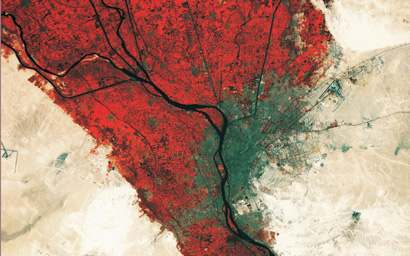 The 11 countries of the Middle East and North Africa are diverse yet connected by economic and cultural ties. They are among the most compelling frontier markets, says Salah Chamma at Franklin Templeton Investments.
The 11 countries of the Middle East and North Africa are diverse yet connected by economic and cultural ties. They are among the most compelling frontier markets, says Salah Chamma at Franklin Templeton Investments.
This has been a lost decade for most developed stock markets, but for much of the developing world, it has been a period of soaring markets and unparalleled prosperity. To believers, those gains highlight profound shifts in the global economy. In search of higher yields and growth, investors have been in constant pursuit of the next emerging hotspot.
While early investors in emerging markets have realised significant gains, the natural slowdown of the Bric (Brazil, Russia, India and China) countries has opened the door for faster growing, lesser-known economies to rise through the ranks. An increasing number of investors have taken an interest in frontier markets to find growth. These markets have dynamic, fast growing economies, young populations, growing consumption patterns and large infrastructure needs.
ECONOMIC INTEGRATION
The Middle East and North Africa (Mena) region accounts for more than 60% of the MSCI Frontier Markets Index. The region has a population of 170 million across 11 politically and economically diverse countries, which have strong cultural ties and which are undergoing economic integration.
The region has an overall GDP of more than $1.8 trillion, according to the IMF, which is forecast to grow to more than $2.4 trillion by 2017. More than 23% of the global oil supply comes from the region, which accounts for more than 35% of global proven oil reserves, according to BP’s Statistical Review of World Energy, June 2012.
The Mena countries have amassed considerable capital surpluses over the past ten years as a result of higher oil prices and increased production. This has allowed the oil-exporting countries in the region to reduce their debts considerably and build substantial foreign currency reserves.
As a result, the Mena region has been largely resilient to the economic downturn. Macroeconomic indicators have been robust with real GDP growth expected to reach 5.5% in 2012, according to IMF estimates.
Countries such as Qatar, Saudi Arabia and Oman have unveiled substantial infrastructure spending plans as they cater to the needs of a growing population with increasing demands. It is expected that these measures will bolster domestic consumption as well as regional economic activity.
The banking sector, the backbone of the region’s growth, also remains in good shape. The banks have high capital reserves of between 15% and 20%, and low asset exposure to risky countries. The sector compares favourably with most emerging or frontier markets, where liquidity and lending conditions have been tighter.
Mena banks are gearing up for growth after spending several quarters strengthening their balance sheets. They are generally well positioned to cope with potentially worsening global macro indicators. Banks in some Mena countries have achieved among the highest systemic year-on-year loan growth in the world: in excess of 35% in Qatar, 20% in Oman and 15% in Saudi Arabia.
CHALLENGES AND RISKS
It is no secret that the competition for global capital has intensified since the financial crisis as global investors have generally shunned risk. The Mena region has suffered from an image problem following the Dubai debt saga, the Arab Spring and a nuclear stand-off in Iran.
Global investors have tended to be unable or unwilling to distinguish between intra-regional risks. Dubai’s debt problems and the media coverage they generated clouded the investment case for stronger economies such as Saudi Arabia and Qatar. Similarly, the impact of the Arab Spring and the fact that it was limited to certain countries is often misunderstood. One must acknowledge that, although political risk is an issue, it is not unique to the region. Any global investor should differentiate country-specific risks within the region.
There is a lack of a dedicated international investor base, because the Mena region has yet to be successfully defined as an asset class in its own right. However, this may be about to change as global appetite for frontier markets continues to gain momentum.
Meanwhile, countries such as Qatar, the United Arab Emirates and potentially Saudi Arabia are slated to transition into emerging markets. Some estimate this could increase the region’s dedicated investor base from $15 billion to more than $450 billion.
The highly anticipated liberalisation of the Saudi stock market to foreign investors would be a significant precursor to the development of the region’s capital markets. Saudi Arabia has the largest stock market in the region with a $350 billion market cap and an average daily traded value of $3 billion in the first quarter of 2012. Foreign market participation is estimated to be at $1.5 billion.
ATTRACTIVE PROPOSITION
In our opinion, Saudi Arabia has the potential to constitute more than half of the MSCI Frontier Markets Index, bringing Mena’s total exposure to more than 80%. Saudi Arabia also has the potential to constitute more than 3% of the Emerging Index should the market open up and satisfy all of MSCI’s requirements.
We believe the Mena region offers investors an attractive investment proposition based on solid fundamentals. While investors focus most of their attention on the Bric countries, other emerging opportunities are going under-represented in their portfolios. Given the region’s size, significance and growth outlook it is only a matter of time before global investors find their way into the Mena markets.
Salah Chamma is co-head of Mena Equity at Franklin Templeton Investments
©2012 funds global
